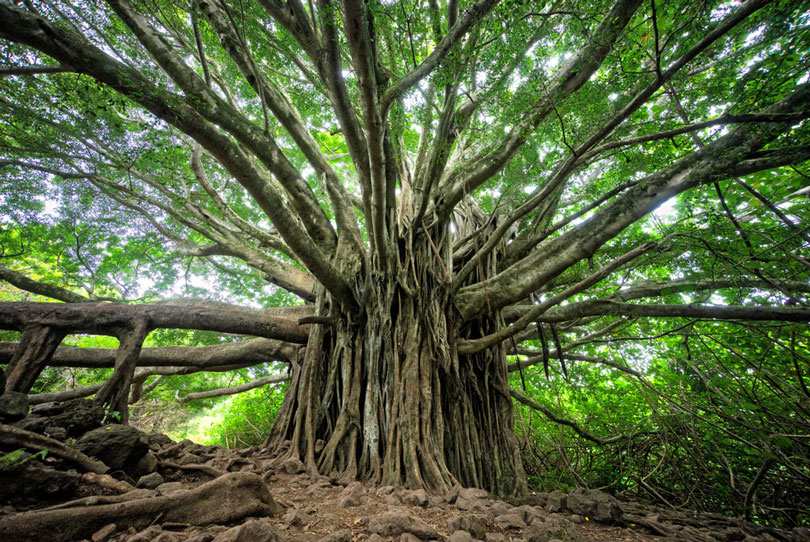
In the world of botanicals, kava and kratom often go hand in hand. And understandably so! These natural plant extracts are often used for similar purposes and in similar settings. But despite their similarities, when it comes to kava vs. kratom, there are a few things to keep in mind.
In this article, we’ll run-down the most important similarities and differences between these popular botanicals. From their effects and origins to the most popular ways to take kava and kratom, we’ll provide everything you need to know about these natural nootropic plants.
The Effects of Kava vs. Kratom
The effects of both kava and kratom are dosage dependant, meaning that users will experience different effects depending on whether they take a small or large dose. However, kratom’s effects tend to be more versatile and customizable than those of kava, owing to the wide variety of specialized kratom strains available.
However, please note that kratom vendors like Kratom Spot are barred from talking directly about the effects of kratom strains. As such, we encourage you to start your research on strains’ effects at reputable sources like the American Kratom Association. Nonetheless, we can benefit from learning about kava’s effects, some of which may be analogous to kratom’s.
In small doses, kava tends to have an energizing, slightly euphoric effect. In larger quantities, it tends to produce a calming, mild sedative effect that reduces anxiety.
Kava’s dosage, according to many users, is somewhat more finicky than that of kratom. Additionally, the “dosage window” in which kava energizes is comparatively small. As a result, most kava users tend to use kava for its mild relaxation effects. However, “heady” strains of kava do exist, and users seeking an energizing experience often have better luck with these.
With kratom, however, it is relatively easy for experienced users to determine the proper dosage and achieve their desired effects. Many kratom strains have been developed, each with subtly different effects when ingested. Kratom has proved to be a remarkably versatile botanical nootropic that is fairly easy to customize for experienced users.
For tips on finding the right kratom strain for your lifestyle and needs, check out our crash-course guide to the most popular kratom strains.
The Botanical Origins of Kava vs. Kratom
Both kava and kratom are natural plant extracts, but their biological and geographic origins are very different.
Kava (scientific name Piper methysticum) is a member of the pepper family of plants. It is a short, stocky shrub that grows natively in the Pacific Islands. The kava that users enjoy is actually a powdered extract from the roots of the kava plant and not, as is commonly believed, from the leaves of the plant.
Kratom (scientific name Mitragyna speciosa) is a relative of coffee plants. In stark contrast to kava shrubs, kratom trees can grow to towering heights of up to 80+ feet at peak maturity. As with kava, kratom is most often consumed as a finely ground powder; kratom powder, however, is made from the leaves of the kratom tree, which are deliberately harvested at particular stages of the growth cycle to promote particular kratom effects.
How are Kava and Kratom Taken?
Despite their differences, kava and kratom are taken in nearly identical fashion.
Most commonly, both botanicals are taken in the form of a finely-ground powder. Kava and kratom powder can be ingested in any number of ways. The most popular of these are the “toss and wash” method or by using oblate discs or otherwise “parachuting” one’s dose.
Kava and kratom powders are also commonly put into convenient, pre-measured capsules. These facilitate use on-the-go, at work, or when you just don’t have time to measure out your dose.
Both kava and kratom are also frequently made into delicious tea, smoothies, or other tasty beverages. In fact, kava and kratom bars are an increasingly popular nightlife destination. An alternative to the traditional bar or cafe scene, these hotspots allow kava and kratom users to indulge in their favorite botanical with delicious, professionally prepared beverages and conversation with like-minded aficionados!
Some kava and kratom bars even offer a “corking” service (to borrow a term from the wine world), where users can bring their favorite strain of kratom powder to be used in the bar’s drinks!
Kava vs. Kratom: Legality
Of all the similarities and differences, the legal status of these plants is likely the most important to understand.
Kratom is legal throughout the vast majority of the United States. However, several states and counties have banned kratom or its alkaloids at the local level. These prohibitions are largely due to misinformation, a lack of clinical research on kratom’s effects, and isolated incidents of shady groups selling laced or tainted products and erroneously calling it “kratom”. But organizations like the American Kratom Association are working to promote more transparent practices in the industry, overturn local kratom bans, and promote safe, legal kratom access for all in the US.
Kava, on the other hand, is generally legal throughout the US. While talk of kava bans arises from time to time in various jurisdictions, they tend to pass without incident, and kava’s reputation remains largely unscathed.
History & Regions of Origin
Kava, or Piper methysticum, is a small shrub that grows in the Pacific Islands, including Hawaii, Fiji, Papua New Guinea, and elsewhere. As a member of the Piper genus, the kava plant (not kava tree) thrives in wet, hot, humid environments and can reach heights of 6-7 feet. Kava was supposedly first discovered by British explorer Captain James Cook in the 1700s.
Kratom and kava both grow natively in tropical and subtropical climates, but Kratom is indigenous to Southeast Asia. Kratom trees are generally much larger than kava shrubs and can surpass them at heights of 50-82 feet.
Cultivation
Unlike mitragyna speciosa, hundreds of kava plant variants exist as the result of cloning and kava planting techniques. Researchers have placed these kava plants into “noble” and “non-noble” categories, with the non-nobles including the tudei, medicinal, and wild kava variants.
Kava plants are typically harvested at about four years of maturity, and the roots of the plant are then brewed to create a drink with sedative, anesthetic, and anxiolytic properties. The quality of kava is not consistent across both families, and the consumption of non-noble kava is associated with greater health risks. For these reasons, noble kavas are generally preferred over non-noble kavas.
Kratom and kava differ in that Kratom variation is the result of deliberate cultivation and harvesting techniques. While the characteristics of the kava plant are generally pre-determined by the type of cultivar planted, the resulting color and alkaloid composition of Kratom leaves are dependent on several factors, including the time of harvest and the amount of sunlight received.
Regulation
The dichotomy between kava families has lead various government agencies and NGOs to regulate and control the kava industry with the intention of reducing user harm. Research has indicated that non-noble kava species contain aberrant concentrations of dangerous compounds like flavokavains, which pose a risk to user safety.
By comparison, noble kava species appear to contain little to no amount of these detrimental compounds, which has created a regulatory preference for the production and exportation of noble kava over non-noble varieties. Still, as of this writing, kava is legal to possess in most countries.
On the other hand, Kratom is strictly controlled across many countries and states/provinces. Although most of the western world seems unconcerned with the risks of kava consumption, American legislative bodies have struggled to define Kratom’s legal status within the United States.
Kava vs. Kratom, In Closing
Ultimately, kava and kratom have more in common than you might think. Their origins, ingestion methods, and effects all overlap significantly, making it no wonder that these natural botanicals are so often found side-by-side!
But despite their differences, kava and kratom do have several differences to keep in mind.
Perhaps most importantly, kratom is banned in certain parts of the US, meaning that kratom users may have to look elsewhere, like headshops, for the support they need. Kava, on the other hand, is legally available throughout the US.
Almost as importantly, kratom’s effects are more easily customized to the user’s preference. While both kava and kratom offer versatile effects, kratom tends to allow for greater customization and consistency. Depending on the kratom strain chosen and the size of your dose, it’s reasonably simple for an experienced kratom user to accurately and consistently achieve their desired effects. On the other hand, Kava requires much greater precision and, even with expertly-measured doses, can often deliver inconsistent results.
Regardless of whether you choose to use kava or kratom, it’s important to ensure you buy only from reputable vendors like Kratom Spot, who can prove the quality of their product with comprehensive lab testing.
Still not sure where to start? A kratom sample pack is the perfect option, giving you the full range of top-quality kratom you need to customize your experience and find out if kratom is the right choice for you!

